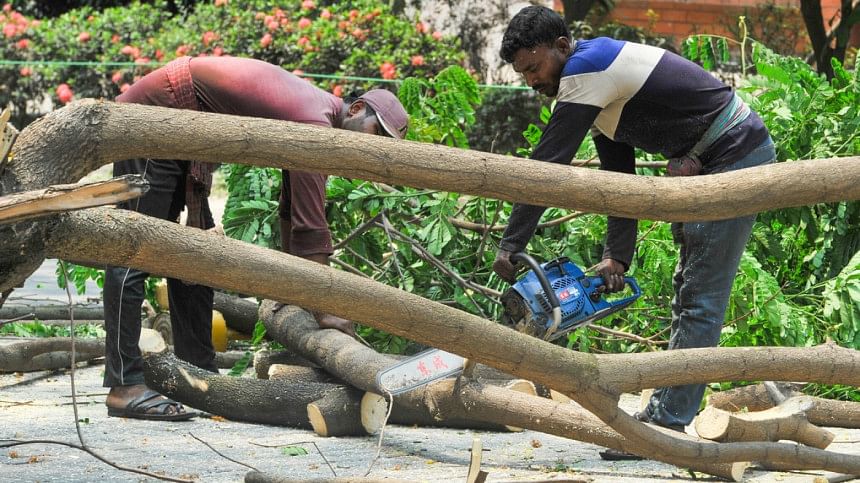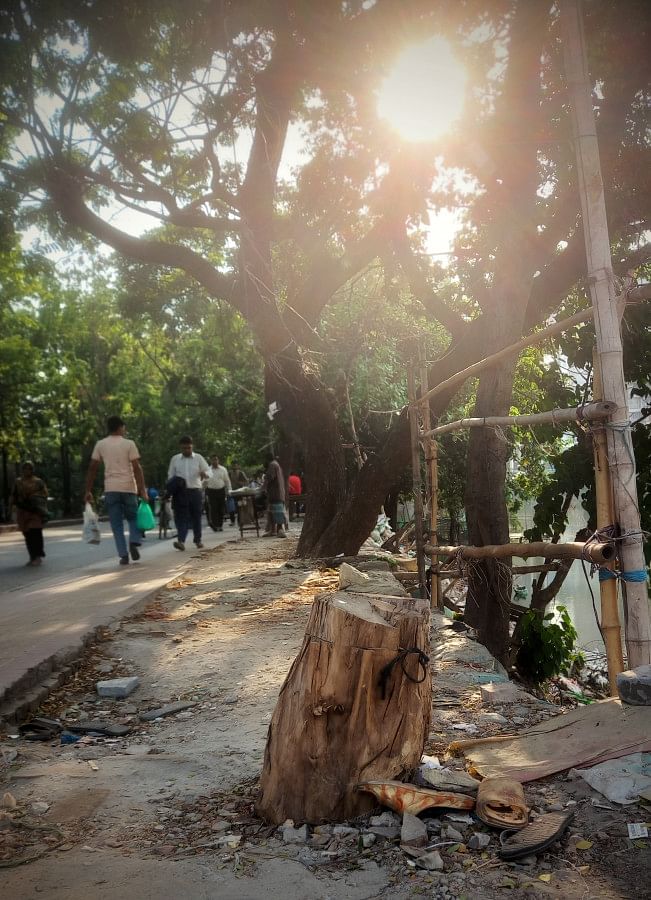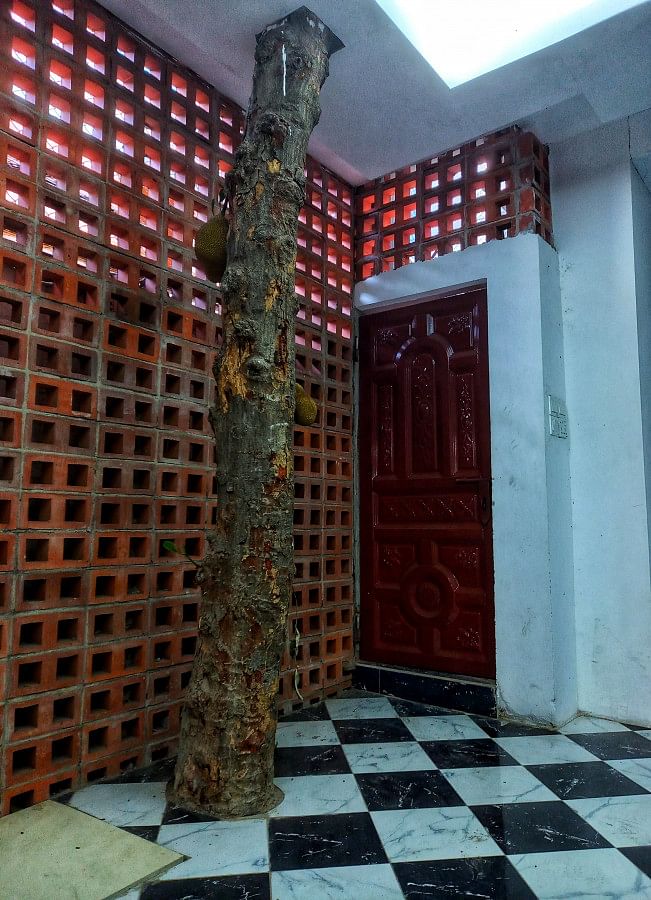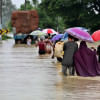Rapid urbanisation and infrastructure projects have prioritised development over environmental preservation, leading to significant deforestation. Roads have widened and buildings have risen, often at the expense of the mature trees that once cooled the air and filtered pollutants – just take the example of the felling of trees at Saat Masjid Road, Dhanmondi in the name of beautification.
According to the Bangladesh Meteorological Department (BMD), the temperature has repeatedly crossed the threshold of 40 degrees Celsius. A heat alert has been issued as a mild to severe heatwave swept across the country. That said, this summer's heatwave seems to be a merciless visitor that overstayed its welcome.
And why wouldn't it? Rows of concrete structures cover the ground whereas the number of trees is declining with time. Megacities of the country such as Dhaka have been robbed of their greenery.
We need trees and green spaces to survive. There can be no alternative.

Studies have consistently shown that trees and plants act as natural air filters, absorbing pollutants, and releasing oxygen. Likewise, urban parks and green spaces are not mere patches of foliage, they motivate people to move, reducing sedentary lifestyles and associated health risks.
Presently, we have Justice Shahabuddin Ahmed Park and Gulshan Lake Park in the heart of Gulshan, which serves as an ideal example of why need more green spaces. They function as lungs for the metropolitan area — offering vital ecological benefits, including air and noise pollution reduction, heat mitigation through shade, and evapotranspiration.
The historic Baldah Garden and the National Botanical Garden in Mirpur are two of our other urban oases in decline. If revived, they can bless the city with much-needed oxygen and heat absorption.
Beyond their environmental impact, parks within city centres offer invaluable social and psychological advantages. The green, open spaces invite residents and visitors to unwind, exercise, and enjoy recreational activities — contributing to overall public health and well-being. This aspect is particularly vital in a city like Dhaka, where urban stress and mental health issues are on the rise.

If the indiscriminate and mindless felling of trees does not stop, Dhaka will soon turn into a heat island. The removal of trees leads to an increase in surface temperatures as buildings, roads, and other infrastructure absorb and re-radiate heat more than natural landscapes such as forests or parks.
This not only makes urban areas hotter but also alters local weather patterns, reducing the occurrence of rain which is indispensable for cooling the environment naturally. No wonder there is no sign of rain despite the extremely hot weather.
According to a study titled "Present status and historical changes of urban green space in Dhaka city, Bangladesh: A remote sensing driven approach," which was published in the US-based "Environmental Challenges" Journal, Dhaka has lost around 56 per cent of its green spaces over the last three decades.
According to the United Nations Environment Programme (UNEP), any city should have at least 25 per cent greenery. But unfortunately, as the study states, the country's capital has only 8 per cent of green space! This finding definitely should be a cause of concern for all of us.
In an overpopulated country like ours, the repeated heat wave is a death sentence, especially for the people who inhabit the densely populated urban slums — where families cluster around small, battery-operated fans, their homes lacking proper ventilation, turning them into veritable ovens.
Again, deforestation in urban areas also leads to a loss of biodiversity. Birds, insects, and other wildlife that depend on tree cover for food and shelter are displaced, leading to ecological imbalances. By chopping down trees and destroying green spaces, we are not only making the earth inhabitable for us but for all the living creatures who rely upon greenery for food and shelter.
Do we want to leave behind an uninhabitable desert for our future generation?
The first step in combating the cutting down of trees is raising awareness about the long-term environmental, social, and health benefits that trees offer. Robust legal frameworks are essential to protect urban trees effectively. Metropolitan cities like Dhaka could benefit from stricter laws that regulate tree cutting and require permits for tree removal.

Most importantly, before any tree is cut down, alternative solutions should be considered. For instance, if a tree is deemed problematic for urban infrastructure, experts can first look into relocating the tree rather than cutting it down. Innovations in construction, such as flexible road materials and designs that accommodate existing tree roots, can prevent the need for removing trees.
We need to remember that protecting the city's trees is not just about preserving nature, but about ensuring a healthy, sustainable future for all its residents.








Comments